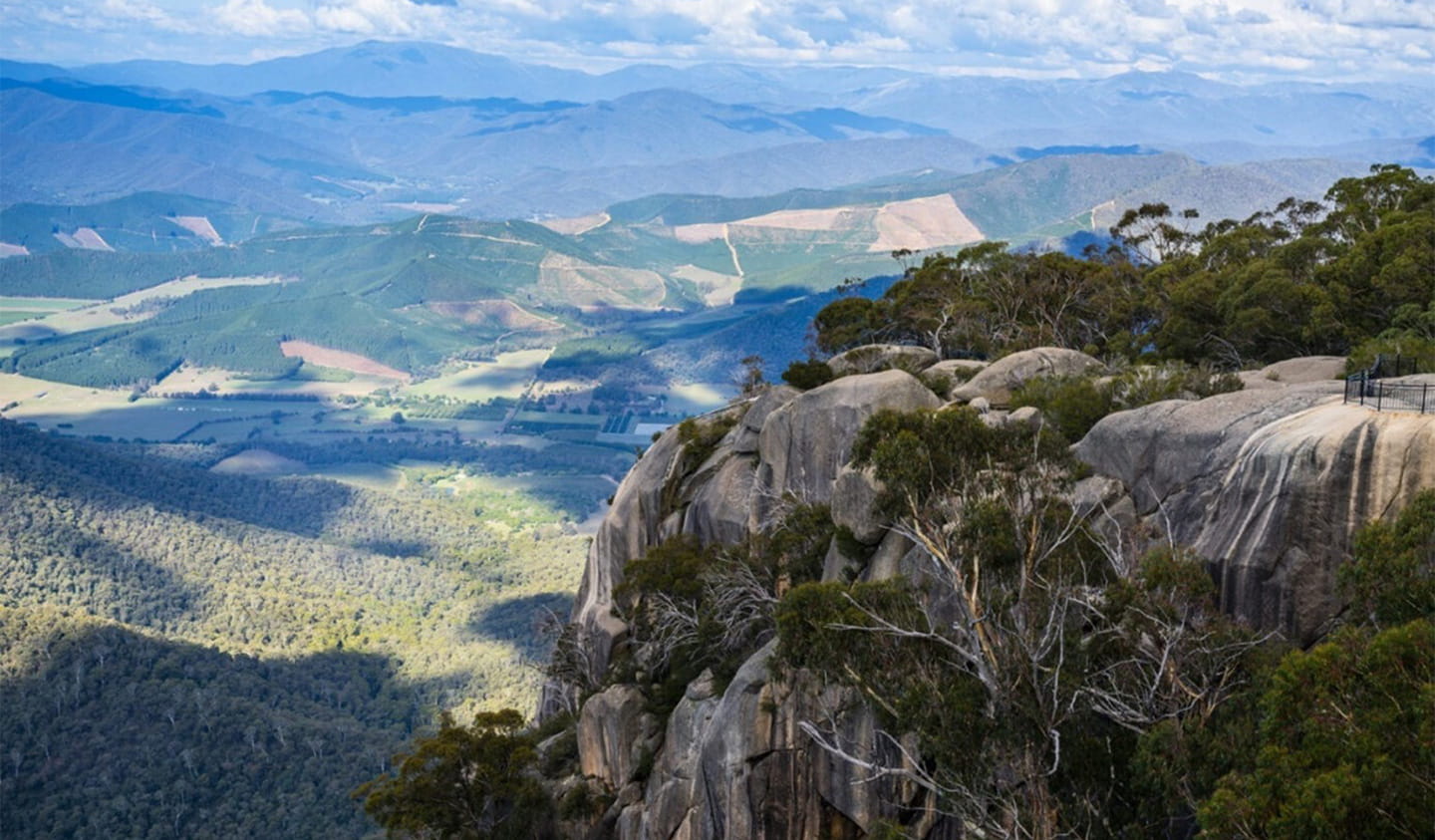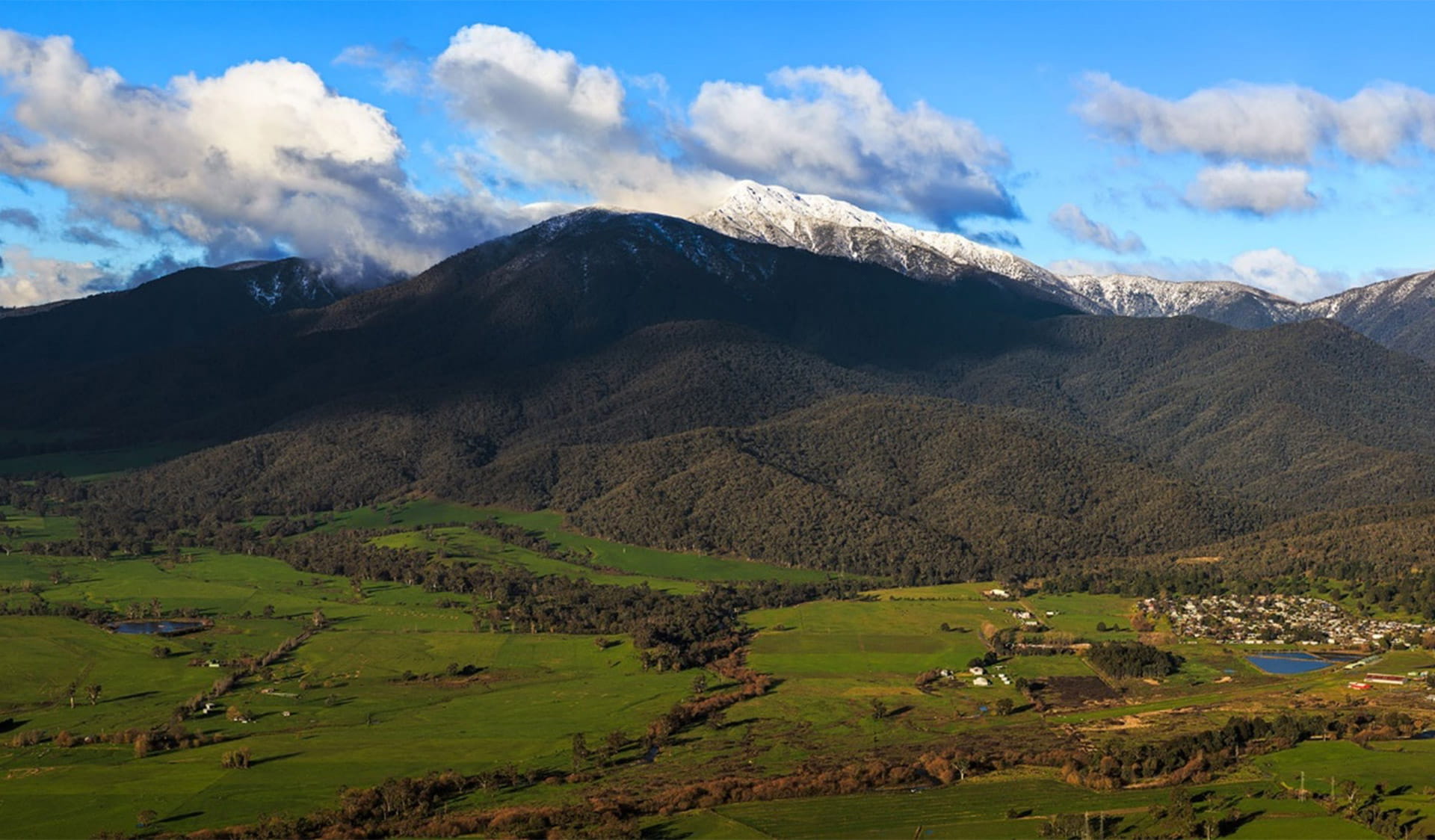Geology
The Victorian alps are a dynamic region that is still undergoing immense geological uplift. It was previously thought that this region was part of a “decaying” mountain range, but recent analysis has shown that the mountain range is still rising, thanks in part to the orogeny (mountain building) of Zealandia, a portion of continental crust which includes the land mass of New Zealand. This isn’t exactly fast though; the alps are being pushed up (on average) 0.1 millimetre every year.
Eastern Victoria has a complex geological history, but the area is dominated by exposures of granite that are thought to have been formed more than 420 million years ago (and at depths of at least 15 kilometres below the earth’s surface) and sandstone formations that formed over half a billion years ago from an ancient shoreline.

Mount Buffalo National Park is mainly comprised of granites, which weather incredibly slowly. Image credit: Parks Victoria.

Mount Bogong was thought to have had significant uplift only recently, with more than 700 metres being accounted for in the last two million years. Image credit: Joe Ritson

